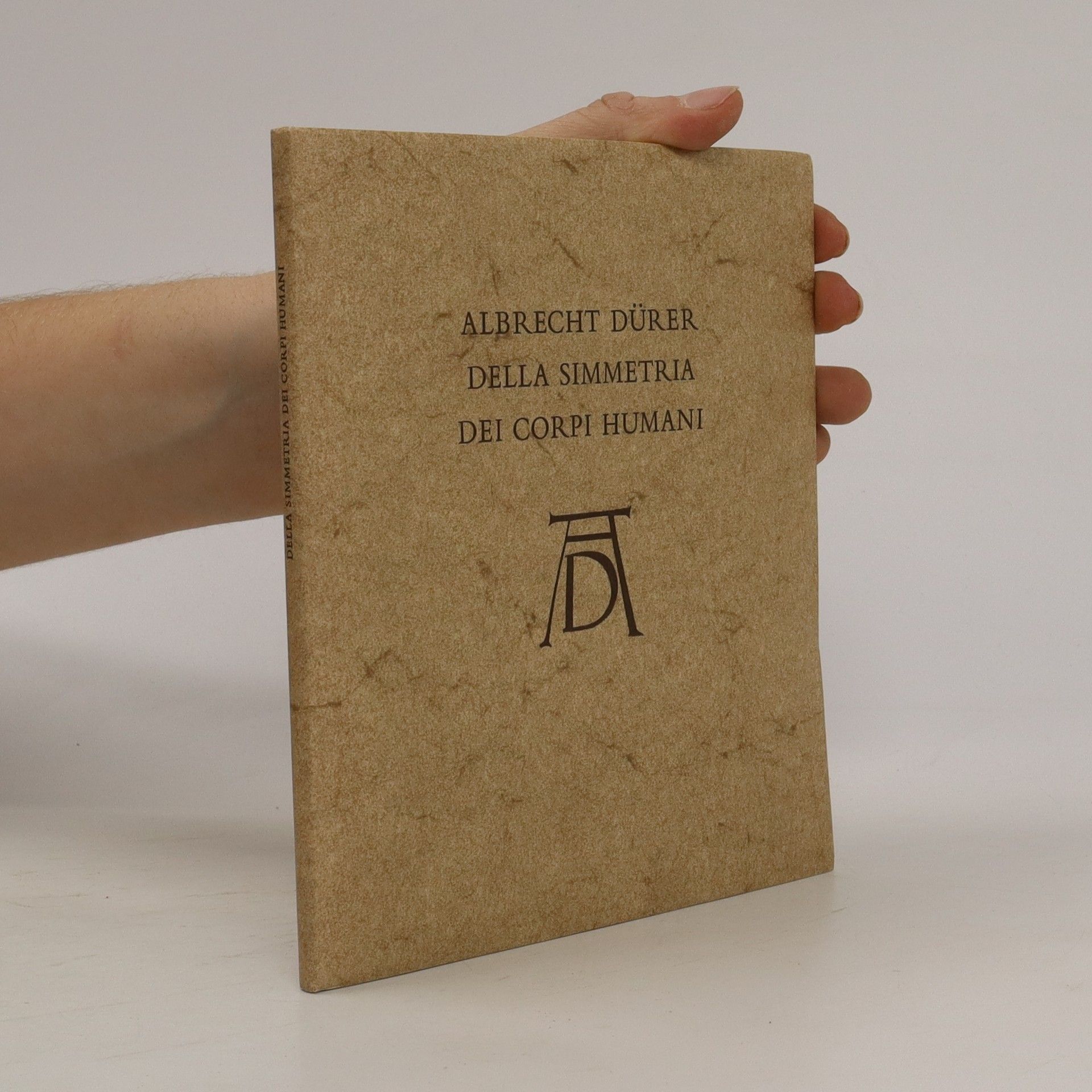Catalogo della mostra di Venezia, Ateneo San Basso, 23 aprile - 14 ottobre 2002 a cura di Andrea Gallo, Don Bruno Bertoli e Vincenzo Sanfo. Testi di Bruno Passamani, Simona Tosini Pizzetti, Giovanna Nicoletti e Roberto Longhi. Centinaia di ill. in nero . 8vo pp. 216 Brossura (wrappers) Perfetto (Mint)
Albrecht Dürer Libri







Dürer e il Rinascimento
- 415pagine
- 15 ore di lettura
Germania-Italia. Andata e Ritorno. Il gigante Albrecht Dürer illumina a suon di olii e incisioni la primavera milanese. La stagione del Rinascimento tra Italia e Germania illustrata in una grande mostra a Palazzo Reale. Obiettivo: presentare per la prima volta al pubblico milanese come a quello nazionale ed internazionale, la grande figura di Dürer nel contesto artistico e culturale del Rinascimento tedesco. Verranno messi in evidenza i rapporti reciproci tra l'arte di Dürer e i grandi maestri suoi contemporanei del Nord-Italia, tra Milano e Venezia attraverso disegni, incisioni, dipinti e grafica.0Affiancheranno la produzione di Albrecht Dürer alcune opere significative di Lucas Cranach, Albrecht Altdorfer, Matthias Grünewald, Hans Baldung Grien, Giorgione, Giovanni Bellini, Cima da Conegliano, Solario, Jacopo De' Barbari, Bartolomeo Veneto, Lorenzo Lotto.00Exhibition: Palazzo Reale, Milan, Italy (21.02. - 24.06.2018).
Dürer e l'Italia
- 403pagine
- 15 ore di lettura
Grazie alle scuderie del Quirinale e al concorso del Polo Museale di Firenze e del Polo Museale di Roma, il pubblico italiano e internazionale avrà l'occasione di conoscere più da vicino l'arte di Albrecht Dürer, non soltanto come maestro di grafica stampata ma anche come brillante pittore, acquerellista e disegnatore. Si tratta, infatti, della prima mostra in Italia dedicata a questo geniale artista del Rinascimento in un'ottica complessiva.
Lettere da Venezia
- 87pagine
- 4 ore di lettura
An introduction to the Renaissance genius of Albrecht Durer. It focuses on Durer's studies of the natural world to show how the artist imbued the most ordinary of living things with reverence and emotion. A master graphic artist, Albrecht Durer (1471-1528) was arguably the most important artist of the Northern Renaissance. Although he was extremely influential as a printer, his drawings and paintings reveal a profound scientific curiosity and sensitivity to the world around him. This collection of sketches and watercolours features 34 animal and plant studies, including the masterpieces "Hare" and "Large Piece of Turf". Victoria Salley presents an essay exploring Durer's interest in nature and reproductions which should allow readers to appreciate the intricate beauty of Durer's work as well as his keen powers of observation - traits which continue to inspire and instruct artists today.
Facsimile of Durer's Apocalypse of 1498, arguably the greatest set of prints in Western art.
In 1512, Maximilian I, ruler of the Holy Roman Empire, conceived the most grandiose of his many schemes involving a triumphal arch, the subject of the present volume, and a triumphal procession (see Burgkmair, The Triumph of Maximilian I). The arch, composed of 192 separate woodcuts, would, when put together, form an arch over ten feet high. Designed to immortalize the “last of the knights” and executed when woodcut was at a technical and esthetical peak, this series is one of the most important and amazing in the whole woodcut history.
Albrecht Dürer excelled in various media, but his woodcut designs showcase his creative genius at its peak. This collection features over 300 of his extant woodcuts, including renowned works like the series on the Life of the Virgin, The Apocalypse of John (17 cuts), The Great Passion, St. Jerome in his Study, and The Fall of Icarus, among others. It serves as the sole source for many of these pieces. While sacred themes dominate—depicting the Holy Family, Christ's life, and saints—Dürer also explored diverse motifs, including portraits, book illustrations, coats of arms, and mythological themes. The plates are arranged chronologically, allowing readers to trace the evolution of Dürer's artistry, revealing an individualistic style and unparalleled skill. An introduction by Campbell Dodgson and a 34-page guide by Dr. Willi Kurth address the authenticity of each work, referencing key Dürer scholars and providing historical context from his apprenticeship in Nuremberg to his later works (1520-1528). The woodcuts are reproduced in exceptional detail, making this collection essential for art historians and critics, while also offering aesthetic enjoyment to lay readers.
